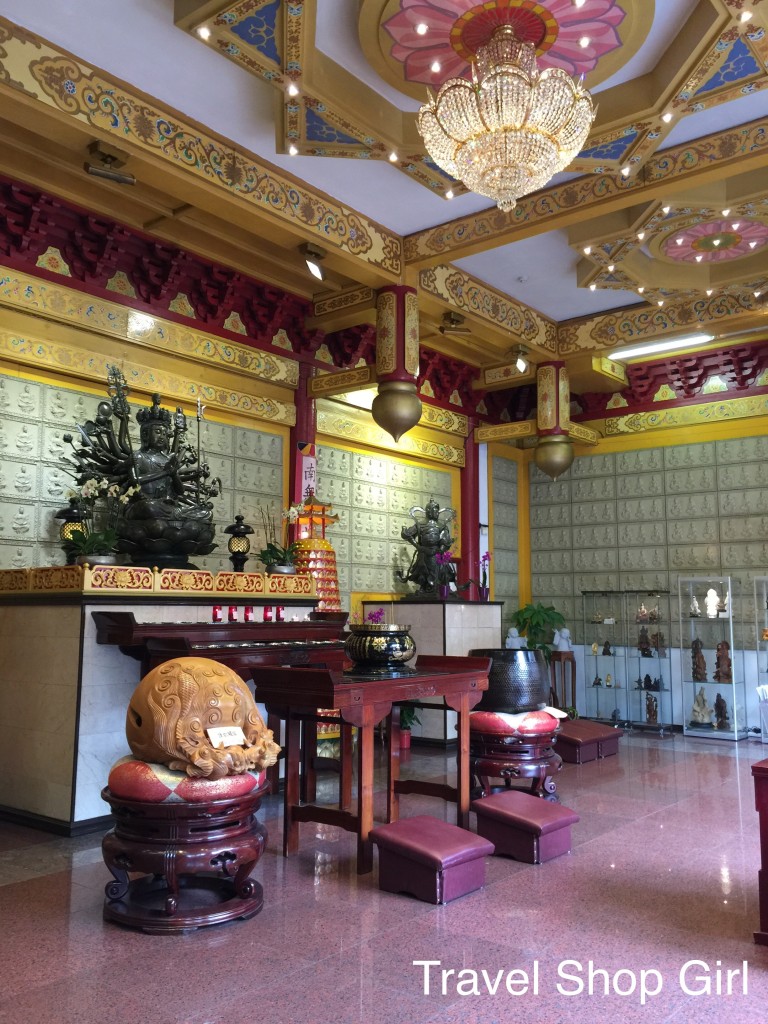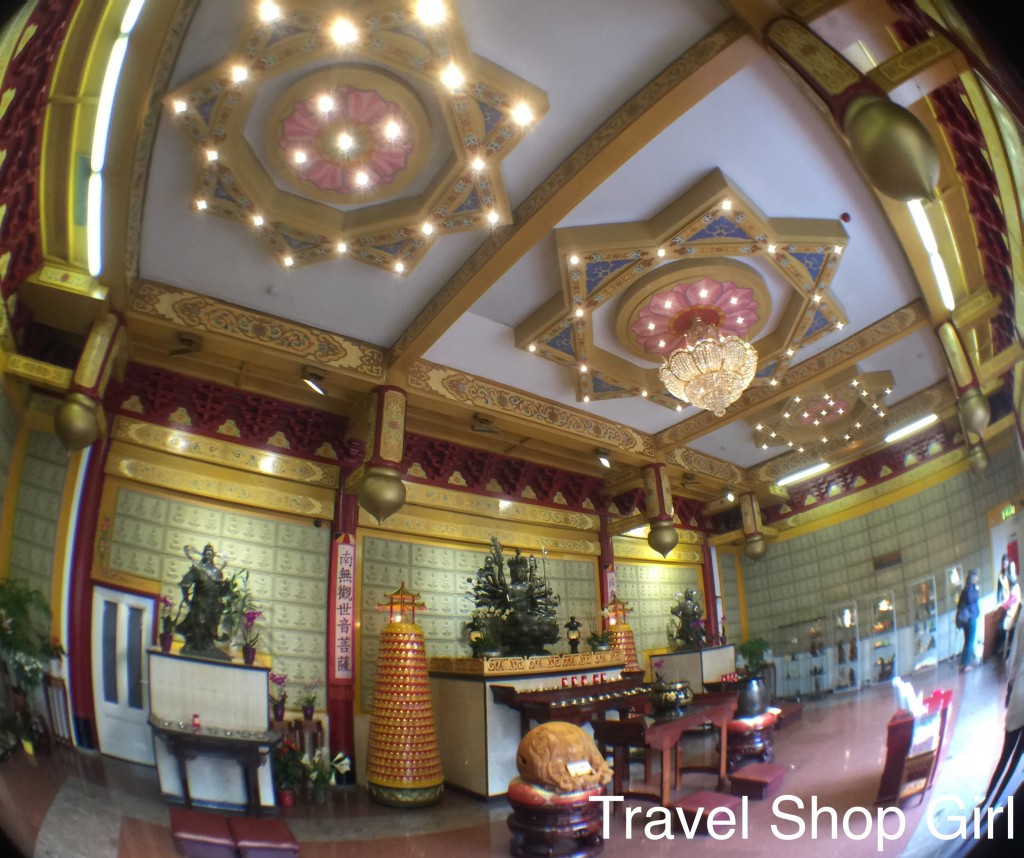
While wandering around in Chinatown during my recent trip to Amsterdam, we stumbled upon Fo Guang Shan He Hua Temple or He Hua Temple (also known as Zeedijk Temple), Europe’s largest Buddhist temple. He Hua means “lotus flower” in Chinese, which is an important symbol of enlightenment within Buddhism. Lotus flowers can grow up from the mud and somehow their petals remain clean and pristine despite their surroundings.
From the He Hua Temple website:
The Fo Guang Shan He Hua Temple is the largest temple in Europe, that has been built in traditional Chinese palace-style. The atmosphere of the temple is Chinese, however Buddhism and practicing Buddhism are both universal and beyond architectural features and culture. During the years the roof had to be changed and is now a mixture of Dutch engineering and Chinese architecture.
Designed by Dutch architect Fred Greven, He Hua Temple is not the first building to stand on this site. A cell monastery was established in 1475 and the remnants of that building were demolished in 1944. For decades it remained an open area that was first a playground in the 1950’s, but after years of neglect it wound up as an area where drug users frequented and then took over completely. In 1994 the decision was made to build a Buddhist temple and on 15 Sept. 2000, He Hua Temple was officially opened by Her Majesty Beatrix, Queen of the Netherlands. The temple was built to encourage both spiritual development and cultural exchange. By doing so it allows them to make Buddhism more accessible to everyone while promoting individual thinking and realization for intertwined souls and those who stand alone, which is an important focus in Buddhism.

After walking through the front gate, when you walk the steps up to the temple you’ll notice the now somewhat faded sign on the porch that reads, Kuan Yin Shrine.
Once inside your eyes will be immediately drawn to Kuan Yin‘s alter with the statues of Wei Tuo and Qie-Lan, legendary protectors of the Dharma and the temple, on either side of her. I felt completely drawn to this place and as I have a large Kuan Yin tattoo that remind me daily to be more compassionate since Kuan Yin is the goddess of compassion. While I may not be Buddhist, I find its principles compelling and food for the thought while at the same time I find a temple’s features as attractive and intriguing as those of churches and cathedrals.

The two illuminated pagodas framing Kuan Yin‘s altar contain hundreds of tiny Buddha statues while the walls around the temple are covered in a Kuan Yin pattern. The large number and repetition “indicates that the Dharma, the way of Buddha, can be found anywhere.” For more information on what you can see at the temple along with the meaning of the items found inside, visit the He Hua Temple‘s website.
The temple is only part of this complex, which also includes many important areas including a library, classrooms, a meditation hall, and living quarters for the resident nuns of the temple.
While you can wander about the temple on your own, should you prefer a guided tour, 30 minute tours are available without appointment each Saturday. Activities are regularly offered at the temple, like Dharma 4 U and a Chinese Dharma course. As the only Buddhist temple in Amsterdam, He Hua Temple isn’t only visited by Buddhists, but tourists, too, so don’t shy away from stepping inside and exploring the temple on your own.
While many perceive the Dutch as progressive with coffeeshops, prostitution, and same sex marriage (legalized in 2001 in the Netherlands), gedoogcultuur (culture of permissiveness) combined with the polder model (a Dutch term for an approach in which efforts are made to reach a broad consensus on important issues) to produce Dutch tolerance and diversity. Think about this as you stroll through Amsterdam and visit He Hua Temple. The free and forward thinking Dutch have created a society of inclusiveness rather than of exclusion because they realize that it’s far easier to work together to survive than not. In many ways the Dutch and Buddhists think alike. Don’t you agree?
Fo Guang Shan He Hua Temple
Zeedijk 106 -118
1012 BB Amsterdam
Tel: +31 (0) 20-4202357
Email: ibpsholland@gmail.com
Open:
Tue- Sat 12.00-17.00
Sun 10.00-17.00
Closed on Monday and January 1
Have you visited Amsterdam’s Chinatown and He Hua Temple?






